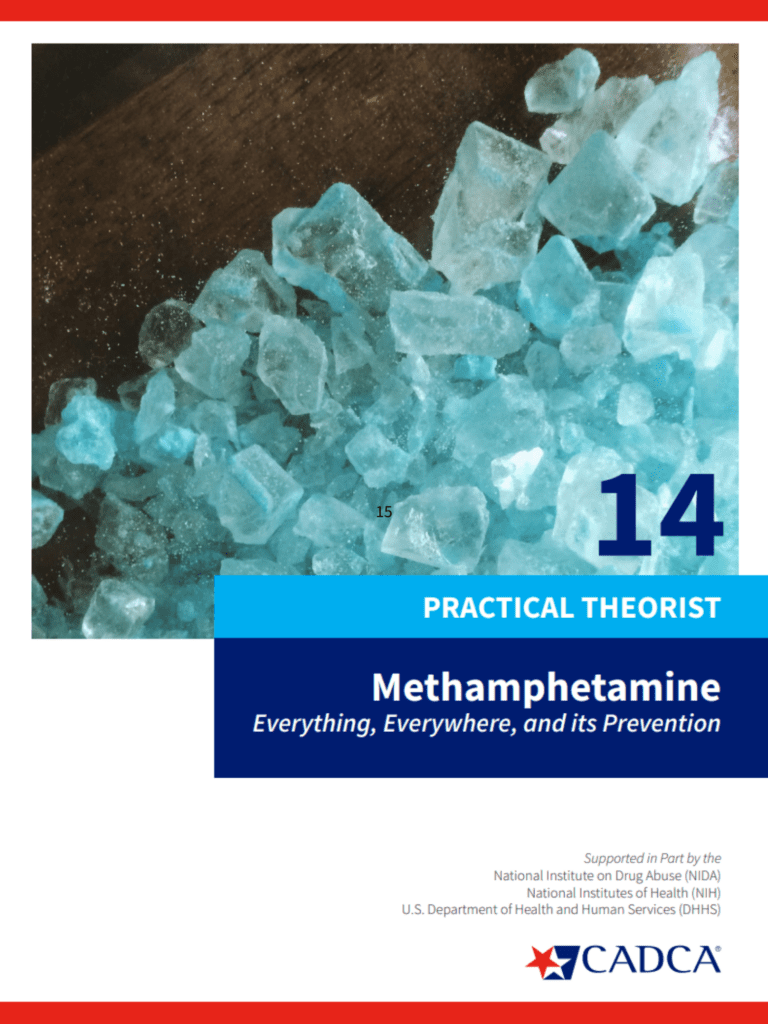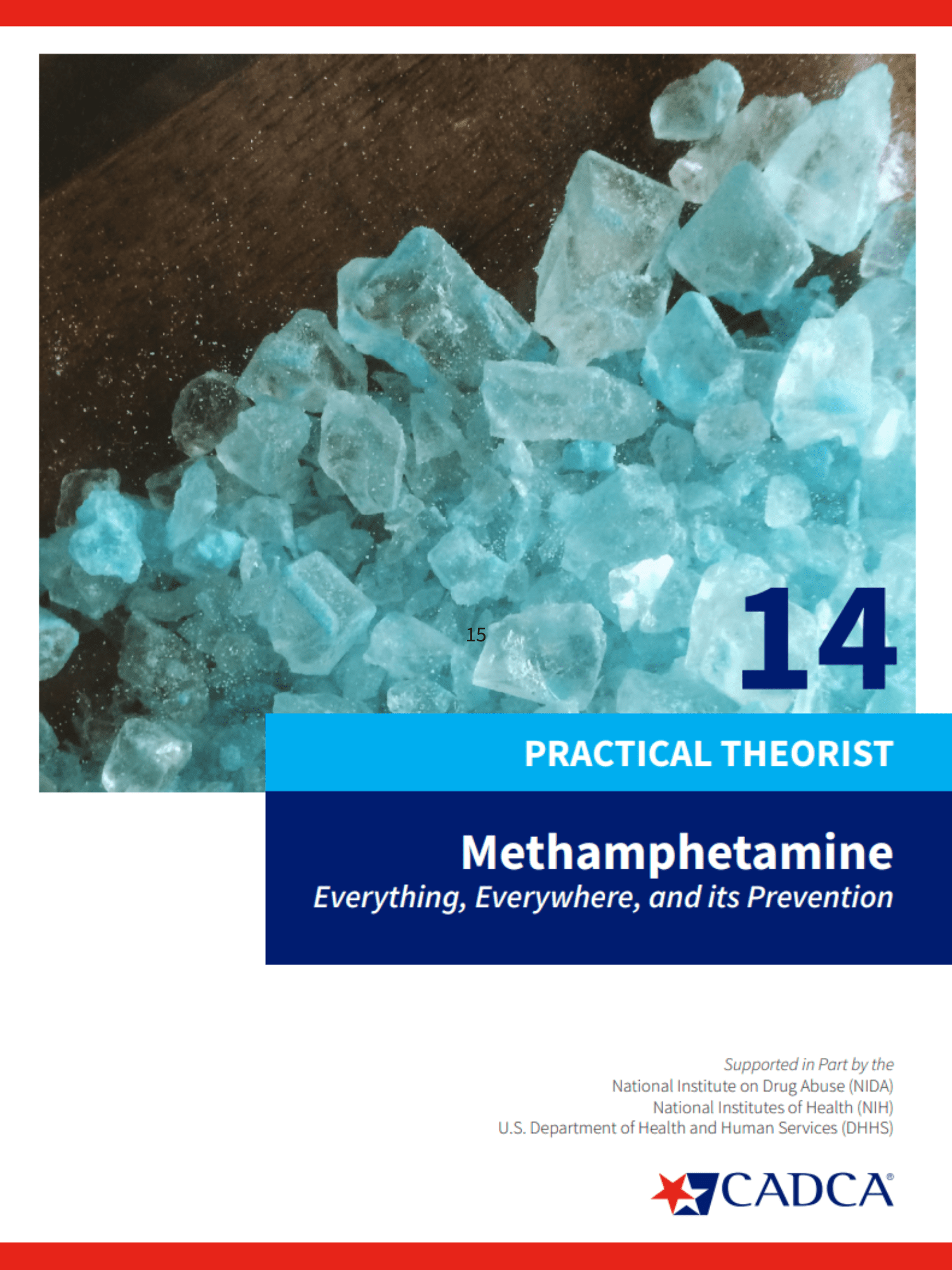Practical Theorist 14: Methamphetamine: Everything, Everywhere, and its Prevention

Methamphetamine is a potent and highly addictive stimulant that affects the central nervous system (i.e., a psychostimulant). It does not occur naturally and is a controlled Schedule II substance under the federal Controlled Substances Act due to its high potential for abuse and potential to lead to psychological/ physical dependence. Methamphetamine is a powerful stimulant that can have long-lasting impacts on those who misuse it. It is also highly toxic and can induce psychiatric, cardiopulmonary, neurological, and other problems requiring immediate medical attention.
This drug is readily available and relatively cheap throughout the United States (National Institute on Drug Abuse [NIDA], 2021a; U.S. Drug Enforcement Administration [DEA], 2021). In 2021, 2.5 million people aged 12 or older used methamphetamine in the past year, according to the National Survey on Drug Use and Health (NSDUH) (Substance Abuse and Mental Health Services Administration [SAMHSA], 2022).
Methamphetamine use disorder is defined by the physicians’ Diagnostic and Statistical Manual of Mental Disorders, Fifth Edition (DSM-5) as a pattern of amphetamine-type substance use leading to clinically significant impairment and distress when at least two of 11 diagnostic criteria within a 12-month period are met. There is still no pharmacotherapy available for addiction to methamphetamine (Wainwright, J. J., Mikre, M., Whitley, P., Dawson, E., Huskey, A., Lukowiak, A., & Giroir, B. P., 2020).



